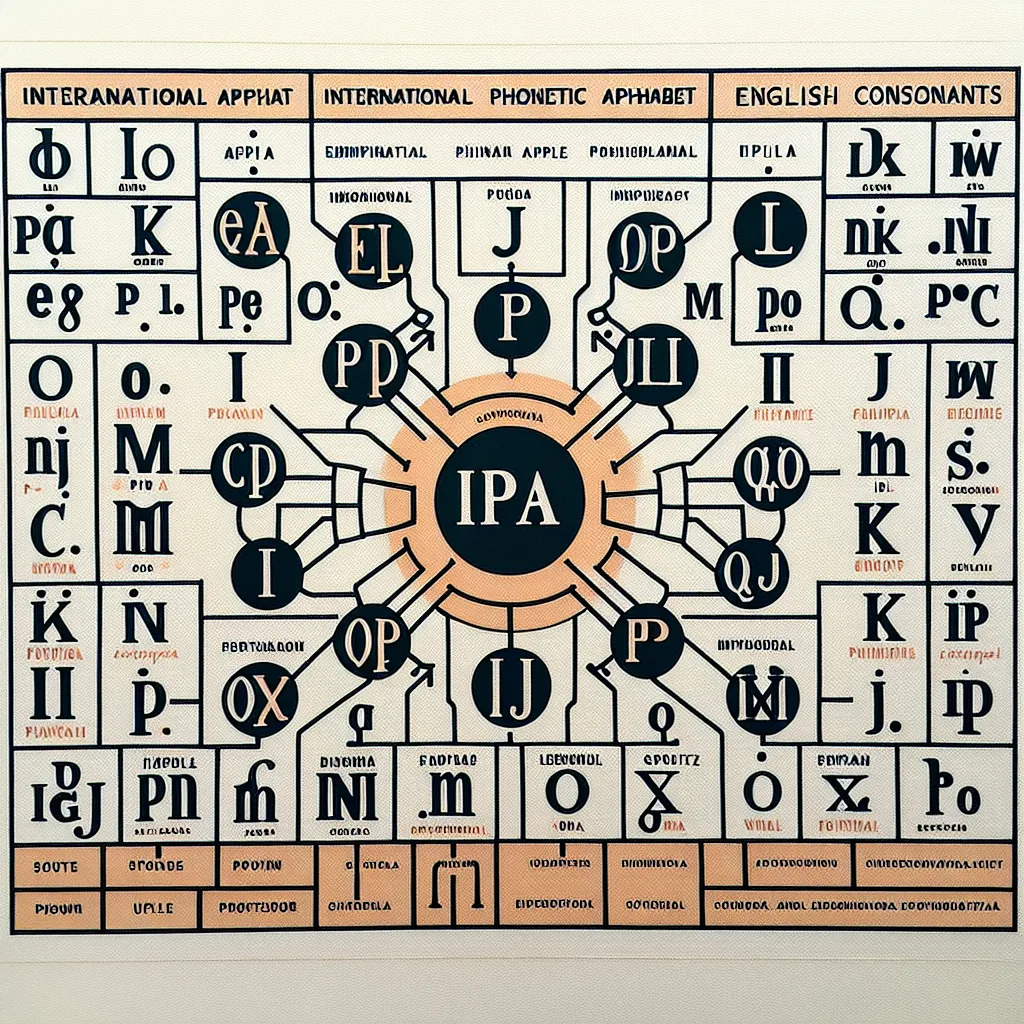Mastering the pronunciation of tricky English consonants is a crucial step in improving your overall English speaking skills. Whether you’re a beginner or an advanced learner, this guide will help you navigate the challenges of pronouncing difficult consonant sounds in English.
 English Consonant Chart
English Consonant Chart
Understanding Tricky English Consonants
English consonants can be particularly challenging for non-native speakers due to the unique sounds that may not exist in their native languages. Some of the most problematic consonants include:
- The “th” sounds (/θ/ and /ð/)
- The “r” sound (/ɹ/)
- The “l” sound (/l/)
- The “w” and “v” sounds (/w/ and /v/)
- The “s” and “z” sounds (/s/ and /z/)
The “th” Sounds
The “th” sound in English can be either voiced (/ð/) or voiceless (/θ/). Many learners struggle with these sounds because they don’t exist in many other languages.
- Voiceless “th” (/θ/): Found in words like “think,” “three,” and “bath”
- Voiced “th” (/ð/): Found in words like “this,” “that,” and “breathe”
To produce these sounds, place the tip of your tongue between your upper and lower front teeth, and blow air out. For the voiced sound, add vibration from your vocal cords.
The “r” Sound
The English “r” sound (/ɹ/) is notoriously difficult for many non-native speakers. Unlike the rolled or trilled “r” in some languages, the English “r” is produced without the tongue touching the roof of the mouth.
To pronounce it correctly:
- Curl the tip of your tongue back slightly
- Keep your lips rounded
- Make the sound without your tongue touching any part of your mouth
Practice with words like “red,” “car,” and “rabbit.”
The “l” Sound
The “l” sound in English can be tricky, especially for speakers of languages where “l” and “r” are not distinguished. There are two main types of “l” sounds in English:
- Light “l” (/l/): At the beginning of words or before vowels, as in “light” or “love”
- Dark “l” (/ɫ/): At the end of words or before consonants, as in “fall” or “milk”
To produce the light “l,” touch the tip of your tongue to the ridge behind your upper front teeth. For the dark “l,” the back of your tongue should be raised slightly.
Methods for Improving Consonant Pronunciation
-
Listen and Repeat: Expose yourself to native English speakers and practice mimicking their pronunciation.
-
Use Minimal Pairs: Practice words that differ only in the target sound, such as “think” vs. “sink” or “light” vs. “right.”
-
Mirror Practice: Watch your mouth in a mirror as you practice to ensure your tongue and lip positions are correct.
-
Record Yourself: Compare your pronunciation to native speakers and identify areas for improvement.
-
Utilize Phonetic Transcriptions: Learn the International Phonetic Alphabet (IPA) to understand the exact sounds in words.
For more detailed information on improving your overall English pronunciation, check out our guide on how to improve English pronunciation.
Quick Tips for Mastering Tricky Consonants
-
Exaggerate at First: When learning a new sound, exaggerate the mouth movement to help muscle memory.
-
Focus on Mouth Position: Pay attention to tongue placement, lip shape, and teeth position for each sound.
-
Practice Daily: Consistency is key. Set aside time each day for focused pronunciation practice.
-
Use Tongue Twisters: Challenge yourself with phrases that concentrate on specific sounds.
-
Learn the Rules: Understand phonetic rules to predict pronunciation in new words.
To dive deeper into specific pronunciation exercises, explore our article on how to use minimal pairs for pronunciation.
Common Mistakes in Consonant Pronunciation
- Substituting “s” or “z” for “th” sounds
- Rolling the “r” instead of using the English approximant
- Confusing “l” and “r” sounds
- Pronouncing silent consonants in words like “knife” or “climb”
- Mixing up “v” and “w” sounds
How to Correct These Mistakes
- For “th” sounds: Practice placing your tongue between your teeth and blowing air out.
- For “r” sound: Keep your tongue curled back without touching the roof of your mouth.
- For “l” vs. “r”: Focus on the tongue position – touching the alveolar ridge for “l” and not touching for “r.”
- For silent consonants: Study common patterns and practice words with silent letters.
- For “v” vs. “w”: Practice the difference between using your teeth and lips (“v”) and just your lips (“w”).
Phonemic Chart and Commonly Mispronounced Words
Here’s a simplified version of the English consonant phonemic chart:
| Manner of Articulation | Bilabial | Labiodental | Dental | Alveolar | Postalveolar | Palatal | Velar | Glottal |
|---|---|---|---|---|---|---|---|---|
| Plosive | p b | t d | k g | |||||
| Nasal | m | n | ŋ | |||||
| Fricative | f v | θ ð | s z | ʃ ʒ | h | |||
| Approximant | w | ɹ | j | |||||
| Lateral Approximant | l |
Ten commonly mispronounced words related to tricky consonants:
- Clothes (/kləʊðz/)
- Sixth (/sɪksθ/)
- World (/wɜːrld/)
- Squirrel (/ˈskwɪrəl/)
- Three (/θriː/)
- Regularly (/ˈreɡjələrli/)
- Vulnerable (/ˈvʌlnərəbəl/)
- Jewelry (/ˈdʒuːəlri/)
- Particularly (/pərˈtɪkjələrli/)
- Rhythm (/ˈrɪðəm/)
Practice these words regularly, focusing on the correct placement of your articulators (tongue, lips, and teeth) for each sound.
Conclusion
Mastering tricky English consonants takes time and consistent practice. By focusing on the specific challenges of each sound, using targeted exercises, and being aware of common mistakes, you can significantly improve your English pronunciation. Remember to be patient with yourself and celebrate small victories along the way. Regular practice and exposure to native English speech will help you develop more natural and accurate consonant pronunciation over time.
We encourage you to share your experiences and ask questions in the comments below. For more resources on English language learning, explore our other articles on LearnEnglish.net.




